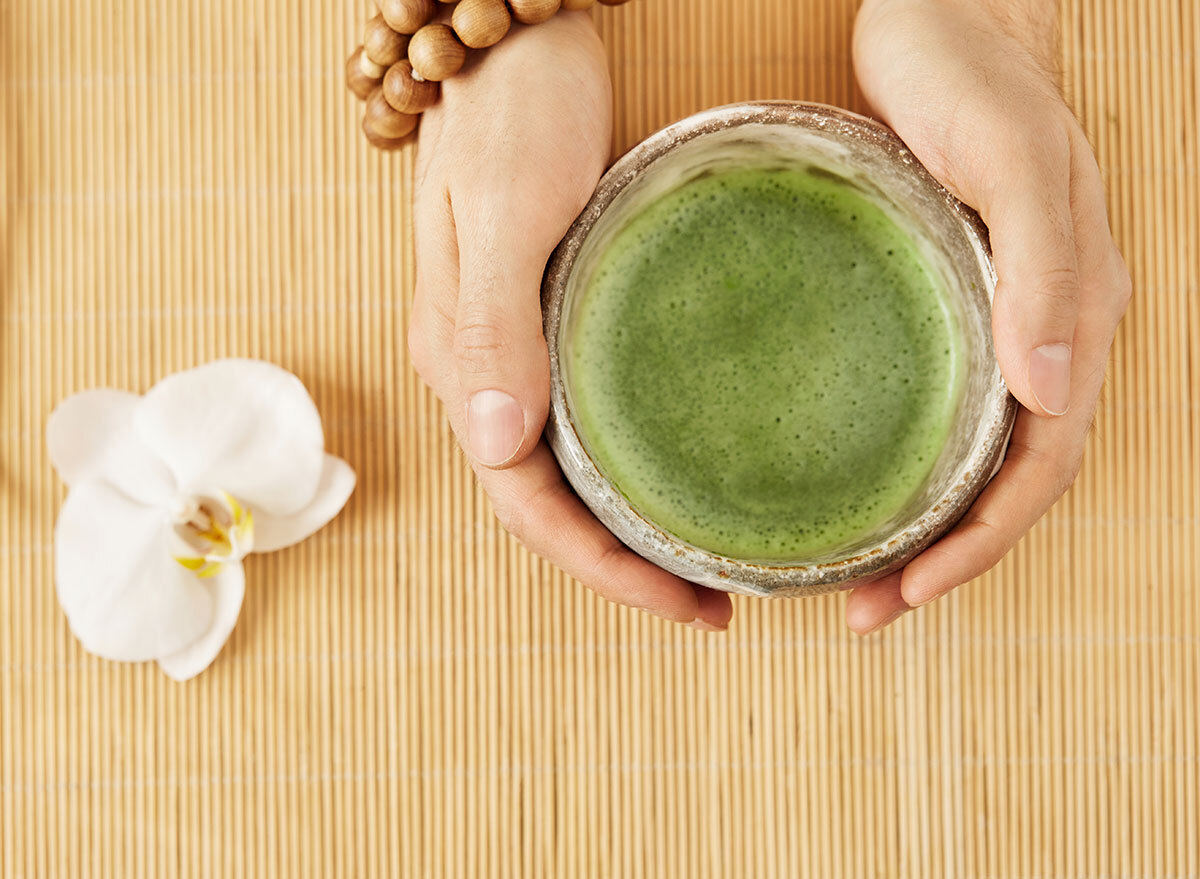9 indoor plants that will help you breathe easier
Experts recommend these air-purifying plants for a healthier home.
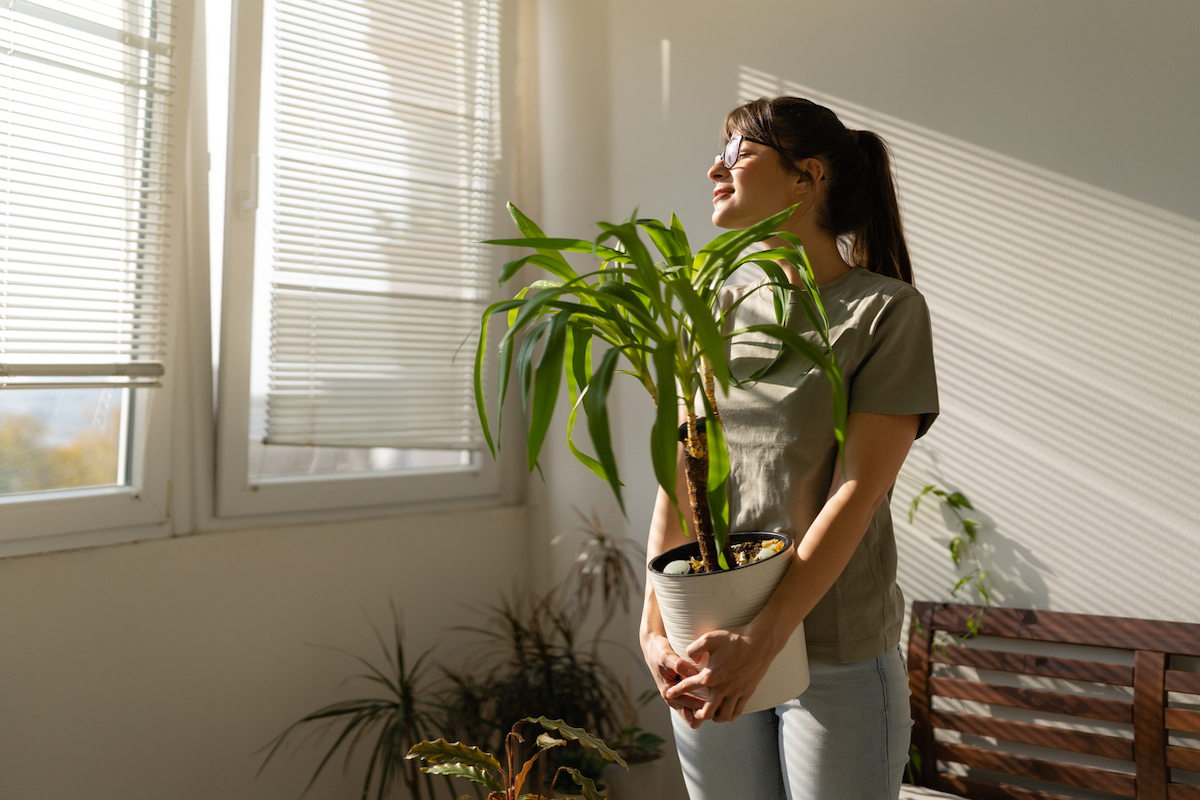
There's no easier way to brighten up your space than by including plants in your decor. Whether you opt for a hanging vine or on a windowsill, indoor plants add life, energy and beauty wherever they are placed. And it turns out they might also help you breathe easier. According to a NASA historical study , plants can reduce indoor air pollutants in a closed and limited environment. While it's unclear how effective they are at performing this magic outside of laboratory conditions, it is known that plants can beautify the air, at least to a small extent. To bring their powers into your home, read on to discover the best air-purifying houseplants.
RELATED: 10 easy tips to save your houseplants that gardeners swear by .
9 air-purifying indoor plants
1. Snake plant

Snake plants are among the hardiest plants, valued for their ability to thrive in low light conditions and little water. Not to mention that their beautiful green and yellow upright leaves can grow from several inches to several feet. And by settling in your home, they will also purify the air.
A 2009 study published in HortTechnology discovered that laboratory chambers containing snake plants saw a faster decrease in ozone concentration only rooms without them. Ozone is essentially smog, and inhaling it can attack the lungs and cause health problems, according to the American Lung Association. If these little plants can counter that, then we invite them to do so.
2. Spider Plant
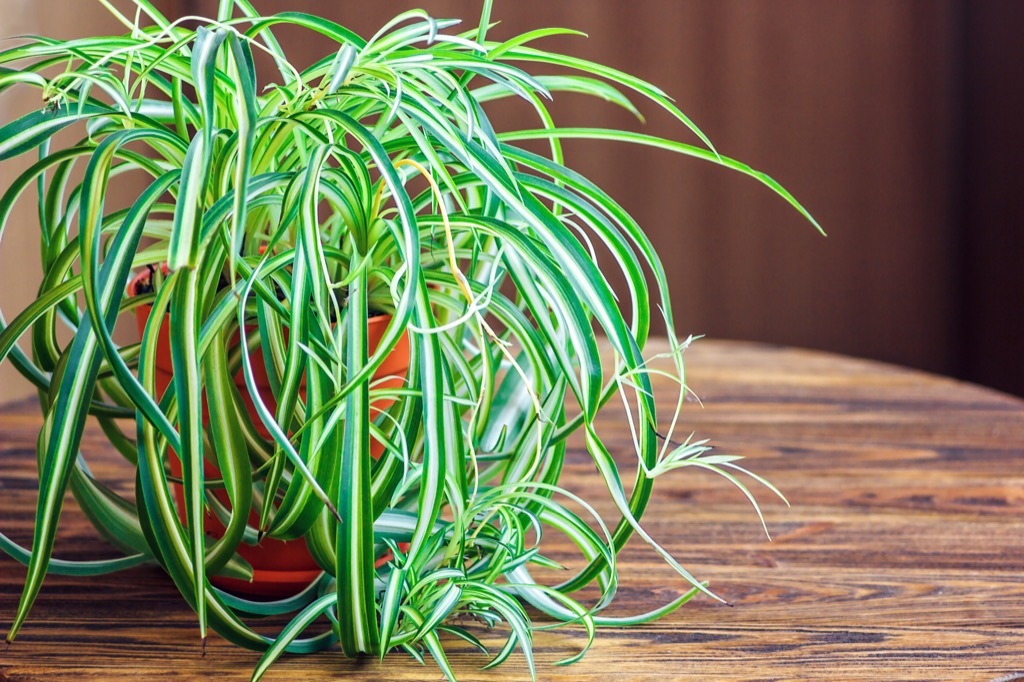
These overflowing houseplants are just as adaptable as snake plants. Put them in indirect light with well-drained soil and they'll be perfectly happy.
In the NASA study who discovered the air-purifying properties of plants, spider plants removed 95% of the toxic substance formaldehyde, a carcinogenic gas that can irritate the skin, eyes, nose and throat, from a bedroom in 24 hours.
“And for pet owners, these plants are safe to spread throughout your home, as they are non-toxic to cats and dogs,” adds Rebecca Sears , CMO and green thumb resident at Ferry-Morse .
RELATED: 8 Easy Houseplants That Don't Need Sunlight .
3. English ivy
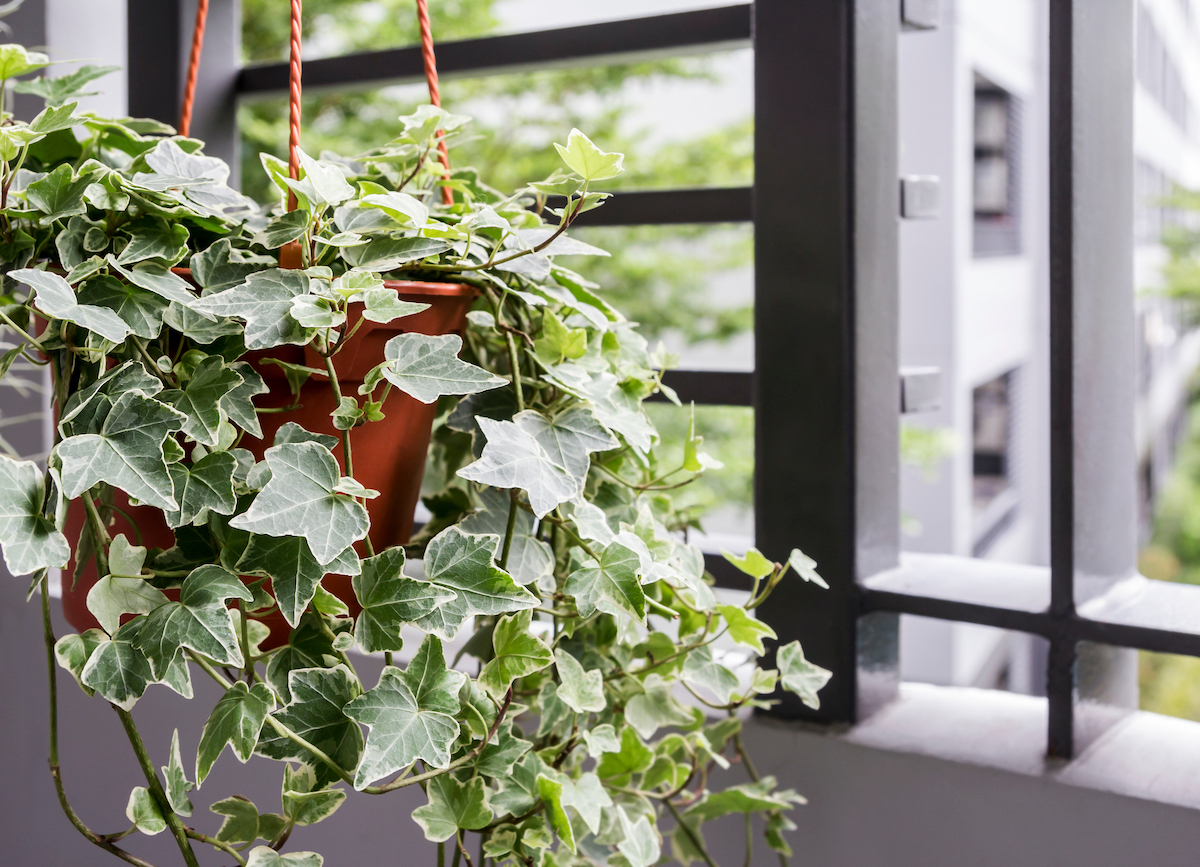
This climbing houseplant can be used as an indoor vine to crawl over hanging baskets or curtain rods.
The NASA study found it to be the most effective houseplant for removing benzene, a toxic chemical created by tobacco smoke and industrial exhaust. It removed nearly 90 percent of benzene from the air and reduced the concentration of trichlorethylene, which can damage the immune and reproductive systems, among other things, and cause certain cancers, by nearly 11 percent.
English Ivy prefers a humid environment and medium light. Just be careful, as the plant is poisonous to humans and pets.
4. Peace Lily
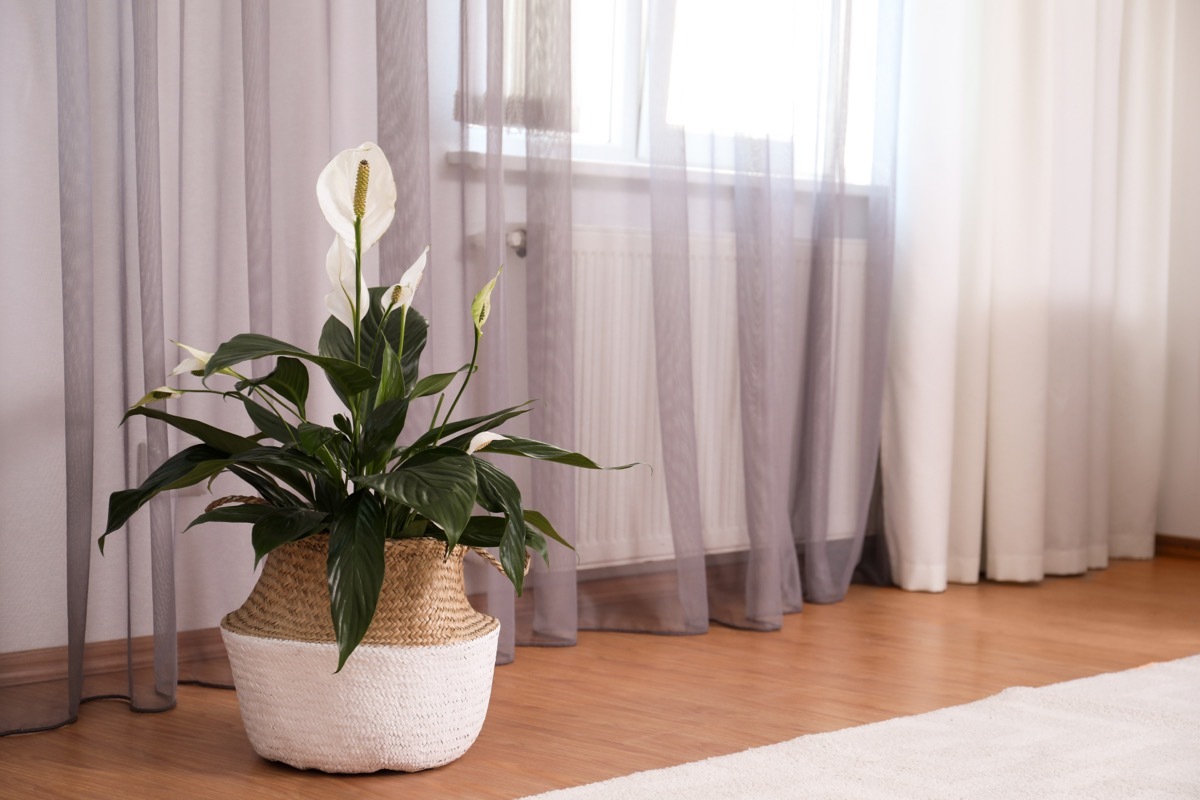
According to the NASA study, the Peace Lily removed nearly 80 percent of benzene from the air and 23 percent of trichlorethylene, which is the most effective for the latter.
“Benzene can be found in gasoline, rubber, paint, cigarette smoke, detergents and many synthetic fibers,” explains Vladan Nikolic , houseplant expert and blog founder Mr. Houseplant . "Trichloroethylene can be found in lacquers, paints, glues and varnishes."
Vladan says this houseplant is low maintenance. It prefers bright, indirect light (although a few hours of direct sun each day is even better) and should be watered once the top half of the soil is dry.
RELATED: 8 houseplants that improve your mental health, according to science .
5. Golden Pothos
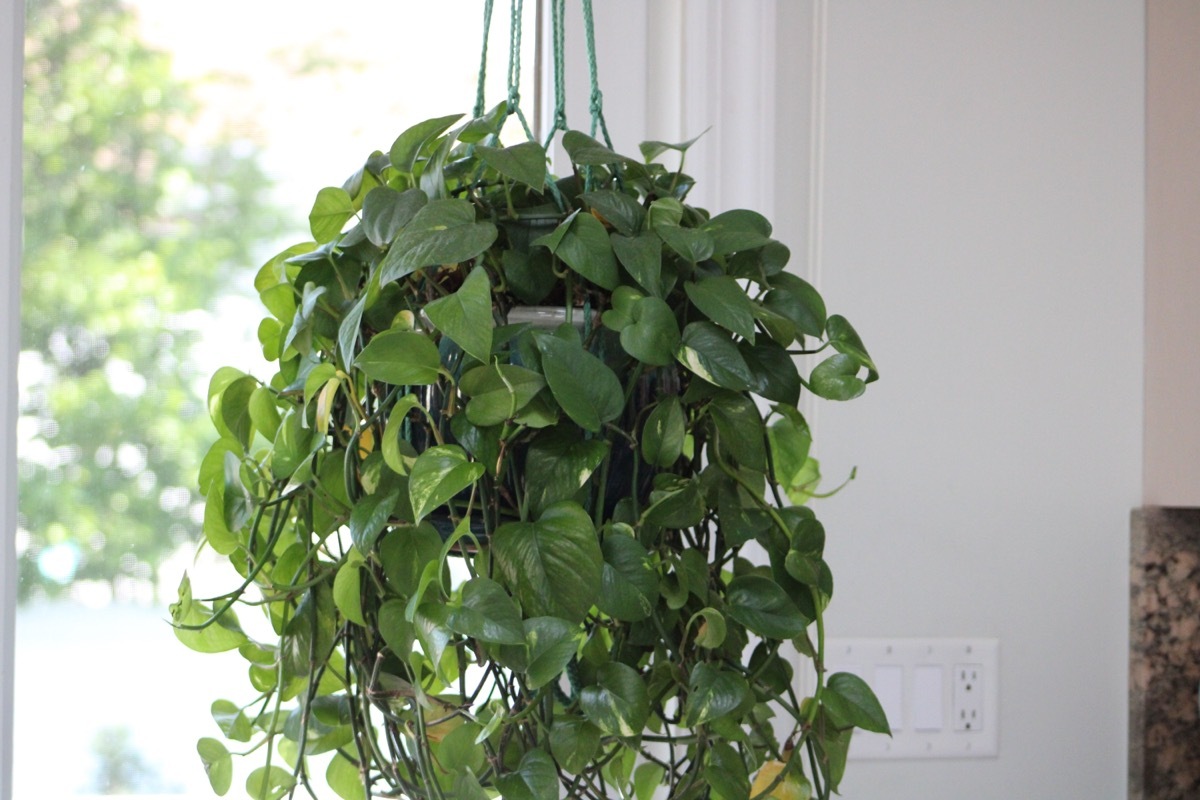
"Golden Pothos removes formaldehyde, benzene and trichloroethylene from the air, improving air quality and reducing the amount of harmful toxins in your home," says Vladan. According to the NASA study, benzene is the most effective, since it eliminates 73% of the air.
“Pothos is easy to care for and tolerates low light well,” notes Vladan. "However, if you give it brighter indirect light, it will produce new leaves more quickly and the plant will be stronger and more resistant to pests and diseases."
6. Ficus

Ficus trees, commonly known as fig trees, are very popular and look incredibly chic when placed in the corner of a room. Along with their sleek appearance, they also have air purifying abilities. ae0fcc31ae342fd3a1346ebb1f342fcb
The NASA study found that they remove nearly 48 percent of formaldehyde, 30 percent of benzene and 10.5 percent of trichlorethylene. Keep them in the sun with moist soil and they will happily improve your air.
“These plants can grow between two and 10 feet tall,” notes Tatiana Jouk , expert at Plantum App . "They prefer indirect direct sunlight and weekly watering."
RELATED: 8 Houseplants That Keep Bugs Away, According To Experts .
7. Dracaena
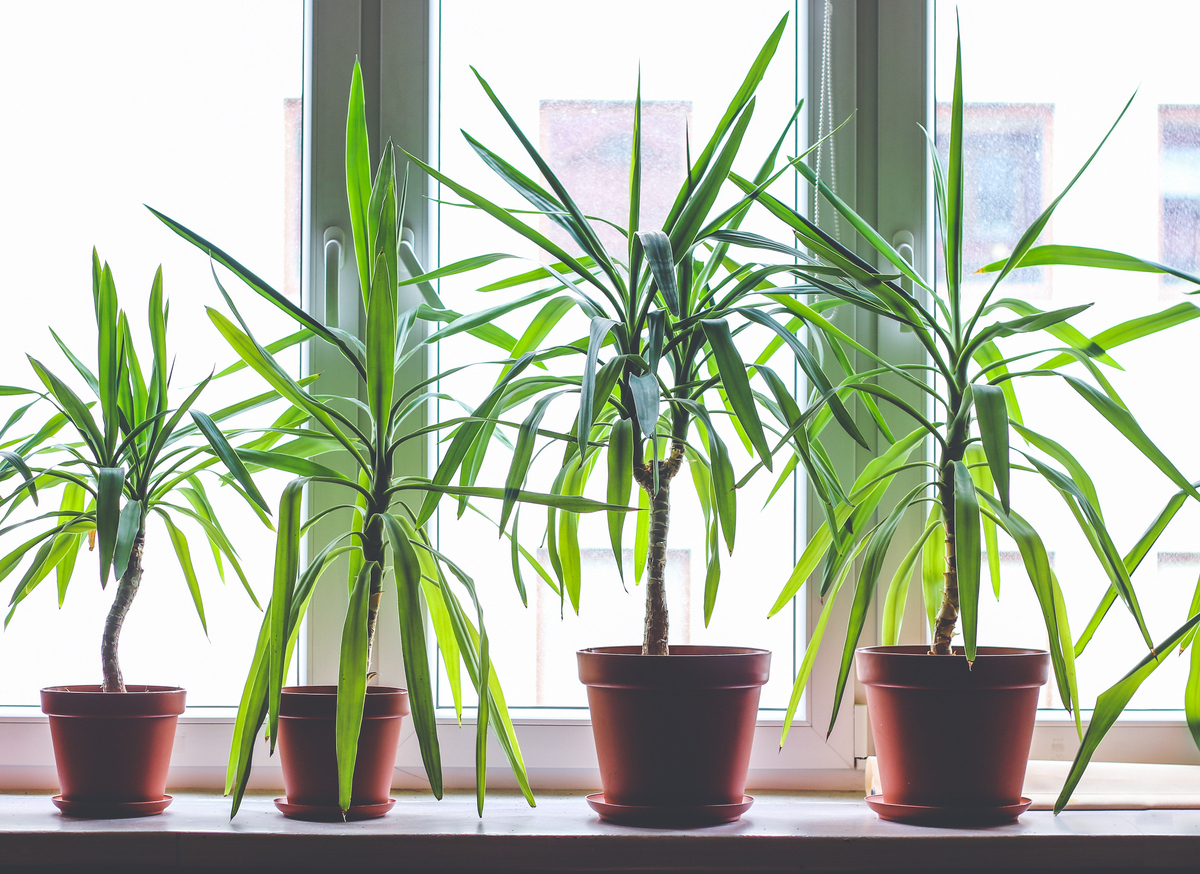
Dracaena is a genus of over 120 plant species native to Africa. Most of them are known for their upright, pointed, tropical-looking leaves. But four specific Dracaena are reported in the NASA study.
The first is Dracaena warneckei, known for its rows of ascending leaves, which remove 50 percent of formaldehyde, 52 percent of benzene and 10 percent of trichlorethylene.
Dracaena deremensis, better known as the Janet Craig plant or corn plant, is known for its green/yellow striped leaves. It removed just over 17 percent of the trichlorethylene and 78 percent of the benzene.
Next, Dracaena marginata removed 13 percent of the trichlorethylene and 79 percent of the benzene. It is known as dragon tree for its red, long, pointed leaves.
Finally, Dracaena massangeana removed 70 percent of formaldehyde (the most of all houseplants studied), 21 percent of benzene, and nearly 13 percent of trichlorethylene. Called corn cane or mace cane, it features bright green, shiny leaves with yellow stripes.
Note that these plants contain a sap that is toxic to dogs and cats.
For more plant tips delivered straight to your inbox, Subscribe to our daily newsletter .
8. Chrysanthemum
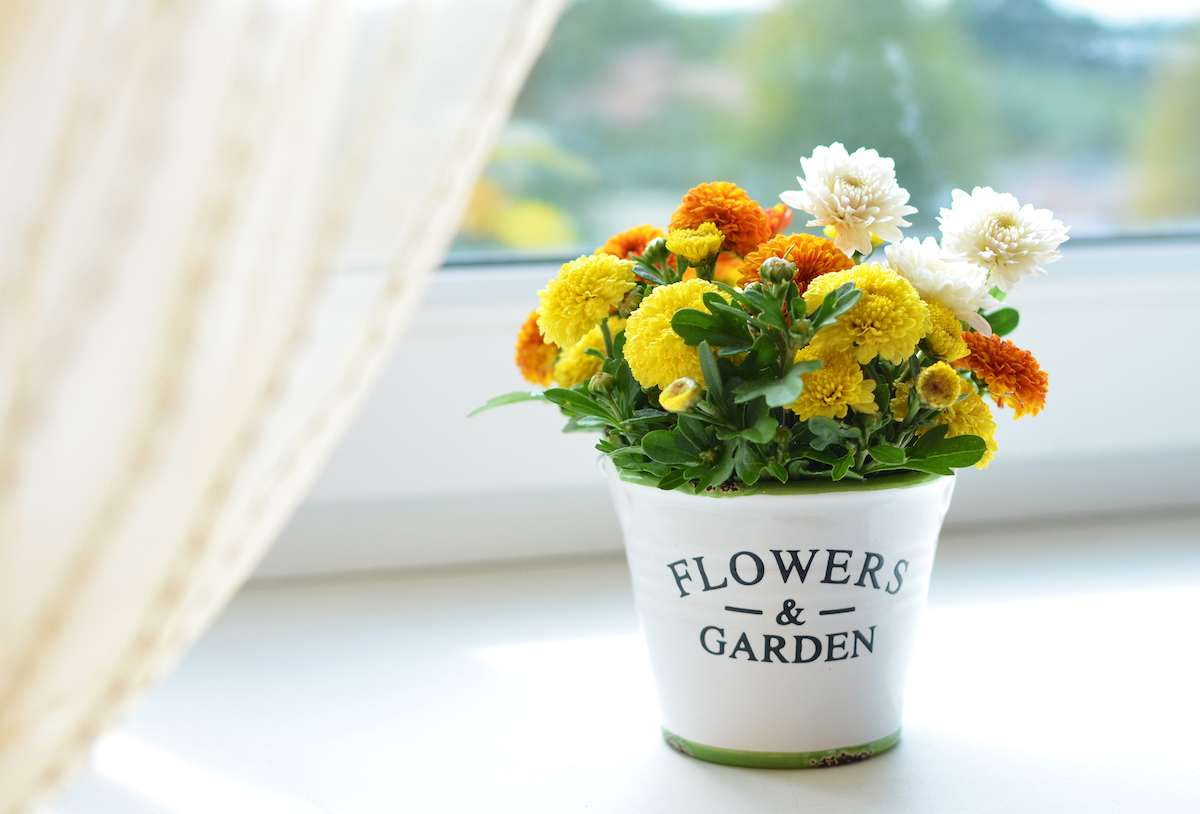
Flowering plants can also provide air-purifying benefits. The NASA study tested potted mums and found that in 24 hours they removed 61 percent of formaldehyde, 53 percent of benzene and 41 percent of trichloroethylene from a sealed chamber.
Mums are fairly easy to care for and require full sun and frequent watering.
9. Gerbera Daisy
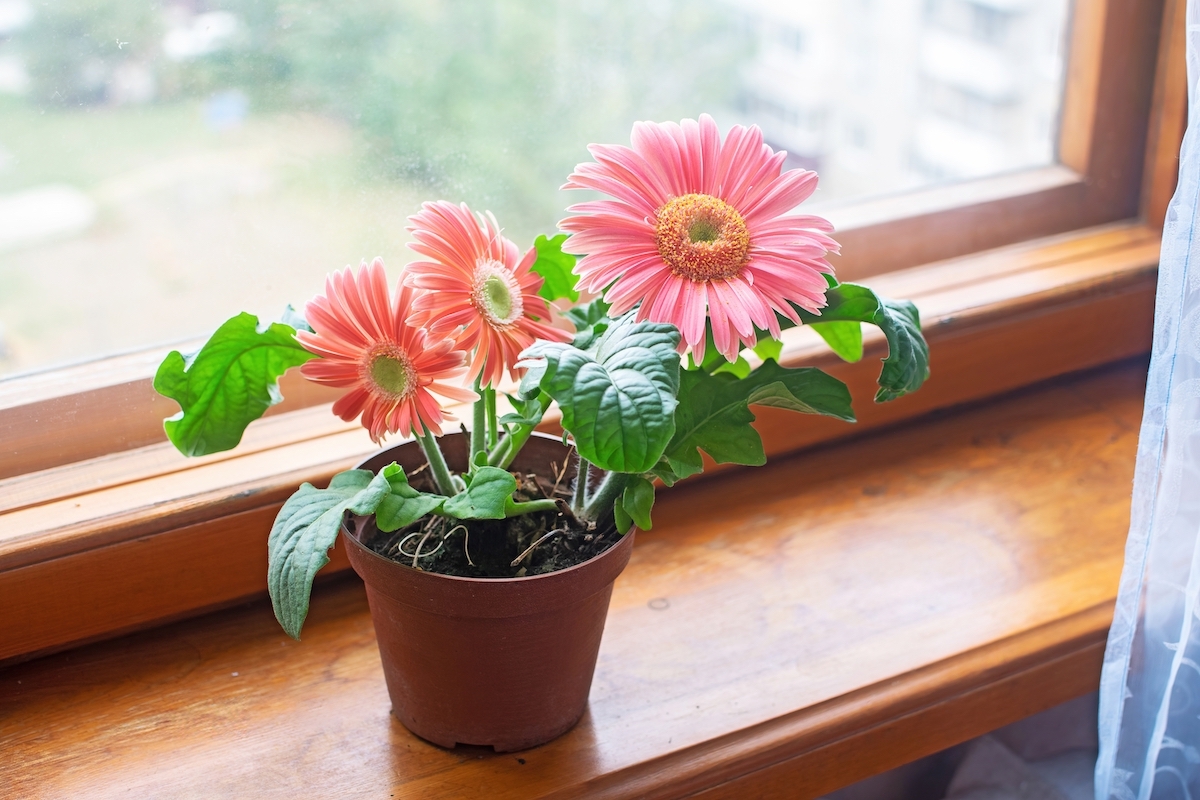
Gerbera is another flowering plant that provides color and better air quality. In the NASA study, it reduced formaldehyde by 50 percent, benzene by nearly 68 percent, and trichloroethylene by 35 percent.
To care for these flowers, place them in bright light (this is key, otherwise they may not produce flowers) and water them when they are dry. They will develop long-lasting flowers from spring through fall, but unfortunately they are annuals and usually only last one season.

I stayed in all the Disney World hotel and there are 3 rooms that I would never reserve again

25 things that parents should never tell their children
